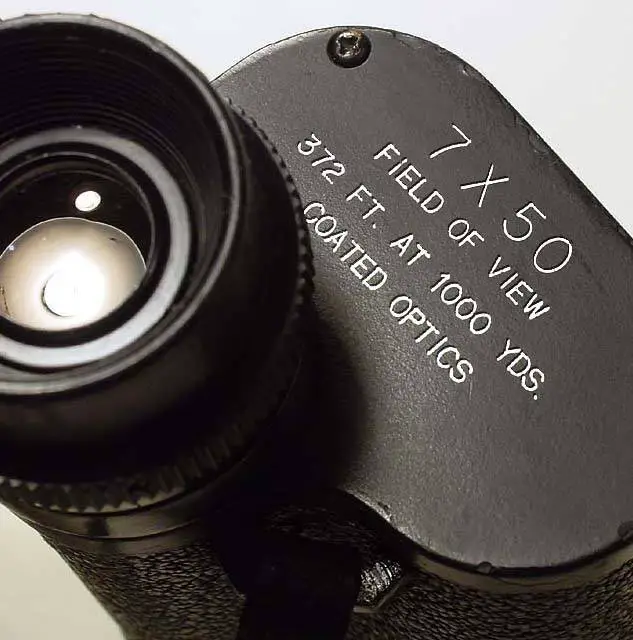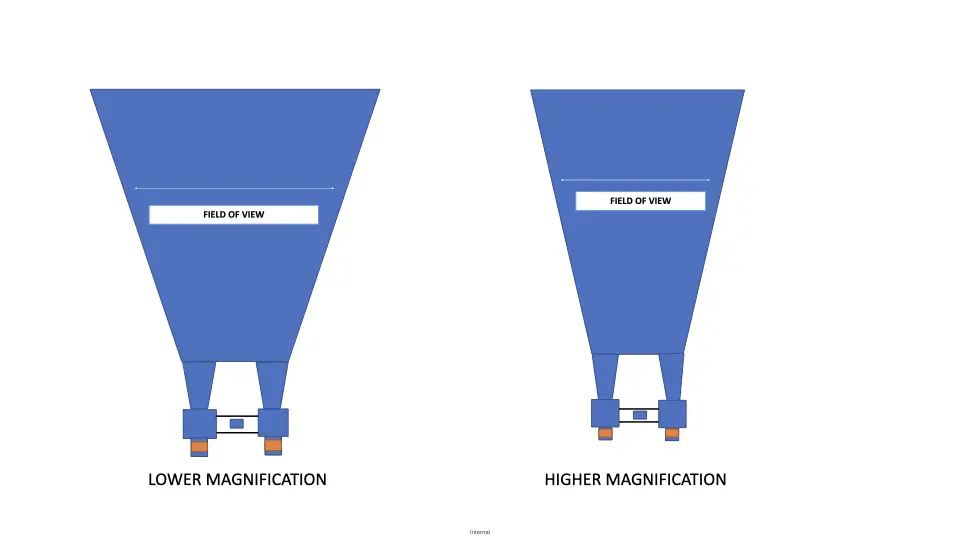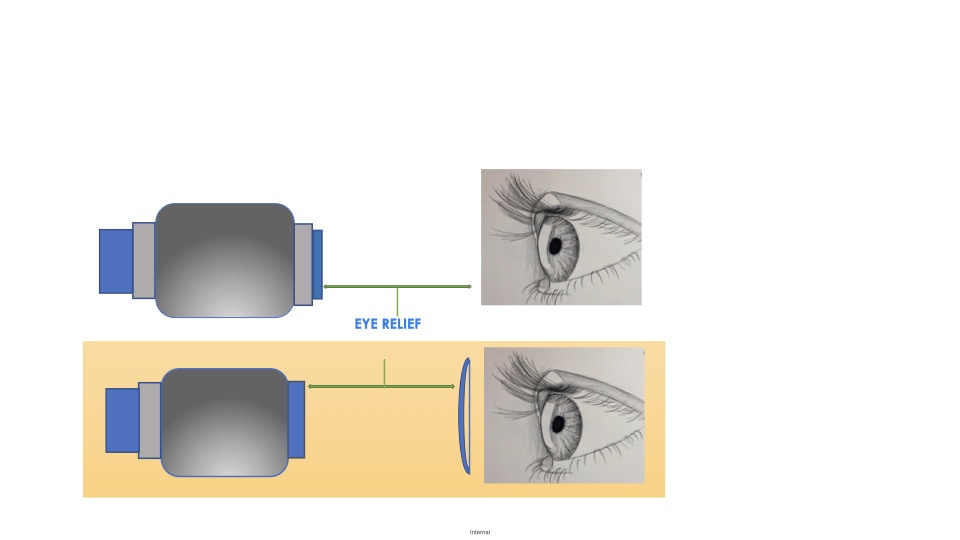What Do The Numbers On Binoculars Mean – Easy Explanation !
Before buying a pair of binoculars for hunting or birding or for astronomy, it is crucial to understand what do the numbers on binoculars mean. These numbers provide you with a wide range of information about the binoculars, all of which will help you to buy a pair that is right for you. Let's look at these numbers in more detail.
1. What do the Magnification Numbers on Binoculars Mean?

The magnification number on binoculars is expressed as part of a combination of two figures, for example 8x40 or 10x25.
The first figure (8x, 10x) refers to the power of magnification. Binoculars with an 8x magnification will make objects appear 8 times closer than they are. The higher the number, the closer objects will appear through the lenses.
Extreme magnifications (12x and up) make it difficult to maintain a steady image, unless you have the binoculars stabilized on a solid object like a table or a wall. You also get zoom binoculars, which offer an adjustable magnification range.
2. Objective Lens Size (Aperture)
The number following the magnification power is called the objective lens size, also referred to as aperture. This is a critical number, because it indicates how much light the lenses are able to gather. A 10x50 binocular will have a 50mm objective lens size, a 7x35 will have a 35mm objective lens size, etc. Wider lenses usually also increase the size of the binoculars.
The wider the objective lens size, the brighter the image you'll see thanks to more light being gathered through the lens. This number is most important for night sky viewing, or other low light conditions.
Here's a simple question to demonstrate this: which of a 10x25 or a 10x50 binocular will be best for viewing the night sky? The answer is, of course, the 10x50. You'll see many more distant objects in the night sky thanks to the wider aperture.
3. Understanding Angle of View
Angle of view walks hand in hand with field of view as they refer to the same thing: the amount of horizontal scenery that is visible when looking through the binoculars.
We will discuss them separately to avoid confusion, and show you how to convert one to the other if needed.
First, angle of view (AoV):
AoV is always expressed in degrees. The higher the number, the wider the area you'll be able to see. Anything over 6 degrees can be considered a good angle of view.
If you see a really high degree number, like 72 degrees, the manufacturer may be using actual angle of view. This number is reached simply by multiplying the angle of view with the magnification value of the binoculars.
For example: a 10x50 binocular with a 7.2 degree angle of view will have a 72 degree actual angle of view (7.2 x 10 magnification).
4. Understanding Field of View
Field of view (FoV) is not expressed in degrees, but in either:
- feet per 1,000 yards or
- meters per 1,000 meters
Again, a higher number simply means you'll have a wider horizontal view through the lenses. Typically you can consider a FoV of about 300 to 375 feet as adequate. Remember though that the higher your magnification, the smaller your field of view will be due to the object being brought closer.
Finally, here's how you convert angle of view to field of view:
Multiply the angle of view by 52.5
So, a 7.2 degree angle of view equals a 378 feet field of view
7.2 x 52.5 = 378
7.2 x 52.5 = 378

Width of field of view is measured by the manufacturer in feet at 1,000 yards
5. Eye Relief Number
The eye relief number on binoculars is mostly important only if you wear glasses. It tells you how far away from the eyepiece your eyes can be while still being able to enjoy the full field of view that the binoculars offer.
If you wear glasses, you'd want an eye relief of at least 15mm.

A long eye relief is recommended for those who wear the eyeglass
6. Exit Pupil Number
The easiest way to understand this number is to hold a pair of binoculars about 8 inches from your eyes. The two dots you'll see in the center of the eyepieces are where the light from the lenses hits your eyes to allow you to see the image you're focusing on.
These need to be greater than your pupils. The value is easily calculated by dividing the objective lens diameter with the magnification. A 10x50 binocular will have a 5mm exit pupil, while an 8x25 will only have a 3.1mm exit pupil.
Anything larger than a 4mm exit pupil should be fine for most conditions, but bigger is better.
7. Close Focus
Our final entry in this article about what do binocular numbers mean is close focus. This number tells you the minimum distance the binoculars need to focus. For example, a close focus of 13 feet means you can get a perfect focus on an object as close as 13 feet to you.
A Quick Checklist
Now you no longer have to be daunted by the question of what do the numbers mean on binoculars. Let's give you a quick checklist to help you remember the most important points:
- for night sky or low light viewing, a high objective lens diameter is important
- greater magnification means a smaller field of view
- look for an eye relief of more than 15mm if you wear glasses
- an exit pupil of more than 4mm is recommended for night viewing
- pay attention to a short close focus if you want to magnify very close objects
Conclusion
What does the numbers mean on binoculars? You now know the meaning of all the most important ones. Keep this guide handy when you shopping for binoculars to find the one that's right for you.
Get a nice big aperture if you want to see as many stars as possible, and a smaller aperture if lighter weight and portability are important to you. Beware of magnifications higher than 12x if you don't want too shaky an image without support, while also maintaining a decent field of view.
You'll be able to figure out all these considerations for yourself with the help of this guide. Good luck on buying the perfect pair of binoculars for your needs!
Furthur Reading: How to Choose Your Perfect Binoculars, Binocular Parts & their function

Greetings,
Good article have a pair of vintage binoculars purchased at estate sale and trying to learn more about them. On one side labeled F C Optica coated lenses and on other 15 x 50 mm Field 5 degree No 3128. Any info would be appreciated.
For every five degrees you look away from the target, you want to be able to get an image that is sharp and crisp. There are many binoculars that do not offer this great capability but there are a couple of models that do.
The best binoculars will not only bring you great visual clarity, but will also help to increase your enjoyment of your favorite outdoor pastime. What are the best binoculars longevity?
Buy Bins from recongnized companies and you should be able to pass them on to the next generation. we are soon covering all about it in an article. Keep checking. Thanks for being here.
I have an old TOWER 10X50 Field 50deg.Made by OFUNA in Japan. I am upset because the diopter in the right lens just spins and spins when turned but the lens remain in a fixed position. Does anyone know what is wrong and if it can be fixed? Thank you kindly for any suggestions offered.
This is the best article I have ever read to help me understand the numbers. The way it is articulated is simple, yet complete, not verbose. Thanks for the tutorial. Now I will be able to enjoy my binoculars better because I know which pair will match my activity.
Thanks. Keep visiting.
Thanks for the great article. I have a pair that says 10×50, field 5 degrees and another pair that says 10×50, field 7 degrees. In this case does the field 5 degrees mean the angle of view? I’m guessing so because it says degrees but it’s confusing that it says field which made me think it might be field of view. Do you know which it is?
Thanks for asking. The 5 degrees and 7 degrees on your binoculars mean angle of view. The binocular with a 5.0-degree angle of view would show the viewer a 5.0-degree “slice” of the 360-degree pie, looking outward.
Kinldy Go Through https://www.binocularsguru.com/what-should-be-a-binoculars-field-of-view/ to understand more about it.
Great article ! Very helpful and explained it in layman’s terms. Thank you !!!
Thanks for being here and giving great feedback!
Encouragement like this helps us to push hard and give valuable content to our readers.
The best monoculars is an optical instruments that may be used to observe distant things. Thanks keep sharing such amazing information.
Very well written!
I want to know what binocular, would be the best for Morel mushroom hunting. Looking across a ditch to see if there are mushrooms on the other side before, I cross a treacherous ditch. Would I be better off with monocular.
Using binoculars such as vortex diamondback 8×42 helps find morels from a safe, elevated vantage point.
Having a good pair of binoculars will also help you spot morels from a distance and avoid areas that have already been picked clean as well as increase the amount of ground you can cover in one trip.
I have macular degeneration and ham considered legally blind. I do see enough to try to watch TV. What would be the best binoculars to use to watch TV from 15 to 20 feet? The TV I watch the most is about 30 to 36 inches wide. What power and field of view would you recommend? Thanks Dick
The ideal power and field of view will depend on your specific visual needs, so it is recommended that you consult with an eye doctor or low vision specialist who can provide a personalized recommendation.
There are also specialized TV glasses and magnifiers available that may be a better option for your specific needs. Again, it is recommended that you consult with a vision specialist who can provide personalized recommendations based on your visual impairment.
Hi there,
Can you tell me what does ‘power 1000% lens”mean on binoculars?
Thank you. Bill.
Just a marketing gimmick! Nothing like a standard feature or specification.
Let me elaborate,
The term “power 1000% lens” is not a common specification used in the context of binoculars. It is possible that this is a marketing term used by a particular manufacturer to describe the magnification of their binoculars.
A magnification power of 1000% would be equivalent to a magnification of 10x (since 1000% is 10 times the original amount), which is a relatively common magnification power for binoculars. So 1000% is not technically incorrect but not a differentiating factor or feature.
Thanks for being here!